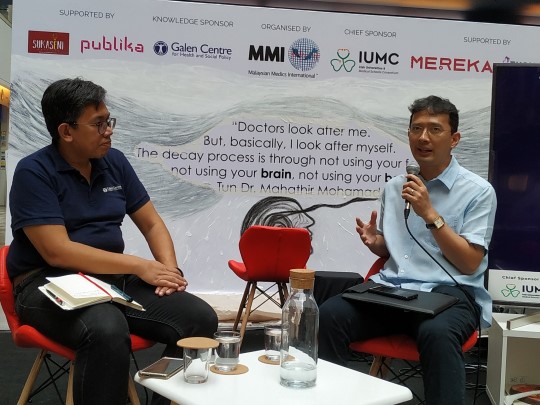KUALA LUMPUR, August 5 — mySalam chairman Johan Merican expressed surprise at the low number of above 4,000 applications for the government health protection scheme, as he expected possibly 100,000 applications.
Johan also acknowledged that the exclusion of pre-existing conditions under mySalam — which means Malaysians do not qualify for the RM8,000 cash benefit if they were diagnosed with a critical illness before January 1 this year when the scheme began — led to a “high number of rejections”.
“But even though, perhaps there’s 10 times more approved for hospitalisation, I daresay that we were expecting it to be in the many thousands or potentially even a hundred thousand, because every day, we have thousands of people going to our government hospitals being warded and they would be really the demographic that should be eligible and claim for this benefit,” Johan told Malaysian Medics International’s (MMI) “The Good Doctor: A Health Care Festival” at Publika on July 21.
The Finance Ministry told CodeBlue that as of July 30, mySalam approved 135 claims for critical illness and 1,078 hospitalisation claims, totalling RM1,372,750 in payouts. The payout sum is a tiny fraction of the insurance premiums that the government paid Great Eastern Takaful Bhd, amounting to about RM400 million a year, since the insurance company contributed RM2 billion to the mySalam fund for five years.
Parti Sosialis Malaysia leader Dr Jeyakumar Devaraj wrote last Friday that a lorry driver, whom he had diagnosed with stage four cancer and referred to a public hospital, was rejected for mySalam’s critical illness coverage because the B40 person’s diagnosis was made at a private facility.
Besides an RM8,000 lump sum benefit for a diagnosis of any of 36 critical illnesses, the insurance-like scheme run by Great Eastern for the bottom 40 per cent (B40) of income earners aged 18 to 55 also pays out RM50 daily hospital allowance up to 14 days per annum for any disease. Eligible B40 recipients for mySalam also receive the Bantuan Sara Hidup (BSH) cash aid.
Johan said making a critical illness claim requires an eligible B40 person to upload onto the mySalam portal a copy of their identity card (IC) and a form, downloaded from the mySalam portal, that is verified with a diagnosis from a doctor at a public hospital. A claim for hospitalisation at a Ministry of Health, university, or army hospital requires one’s IC and discharge note.
But he acknowledged that mySalam’s target group may need an offline application process instead.
“That’s also the experience we had for Bantuan Sara Hidup, where most of the claimants have submitted their registration through manual forms as opposed to relying on a completely online experience. Recognising that, we’re now starting the process of establishing mySalam kiosks at key government hospitals,” said Johan.
mySalam also has started awareness campaigns for doctors working at government hospitals like Hospital Kuala Lumpur.
“I’m sure they also have firsthand experience of patients who really should be going for early treatment, but are postponing or delaying, and we hope doctors can also use this as a form of encouragement to get them.”
When asked if the Finance and Health Ministries were working in silos on mySalam, Johan denied it.
Johan also said mySalam was run by Great Eastern because the Singapore-based insurance company was the first to take up the offer by Pakatan Harapan to provide medical insurance to Malaysia as an alternative to divesting 30 per cent of their shares to local investors.
Great Eastern contributed RM2 billion to the mySalam fund. The government in turn pays Great Eastern the insurance premiums of some 3.8 million B40 Malaysians for five years totalling about RM2 billion. If claim payouts fall below RM2 billion, Great Eastern contributes the surplus back to the fund, but if payouts exceed the premiums, the insurance company covers it.
“We’ve extended offer to other insurance companies. We hope they’ll come on board. In the future, it won’t necessarily be a single provider,” Johan said.








